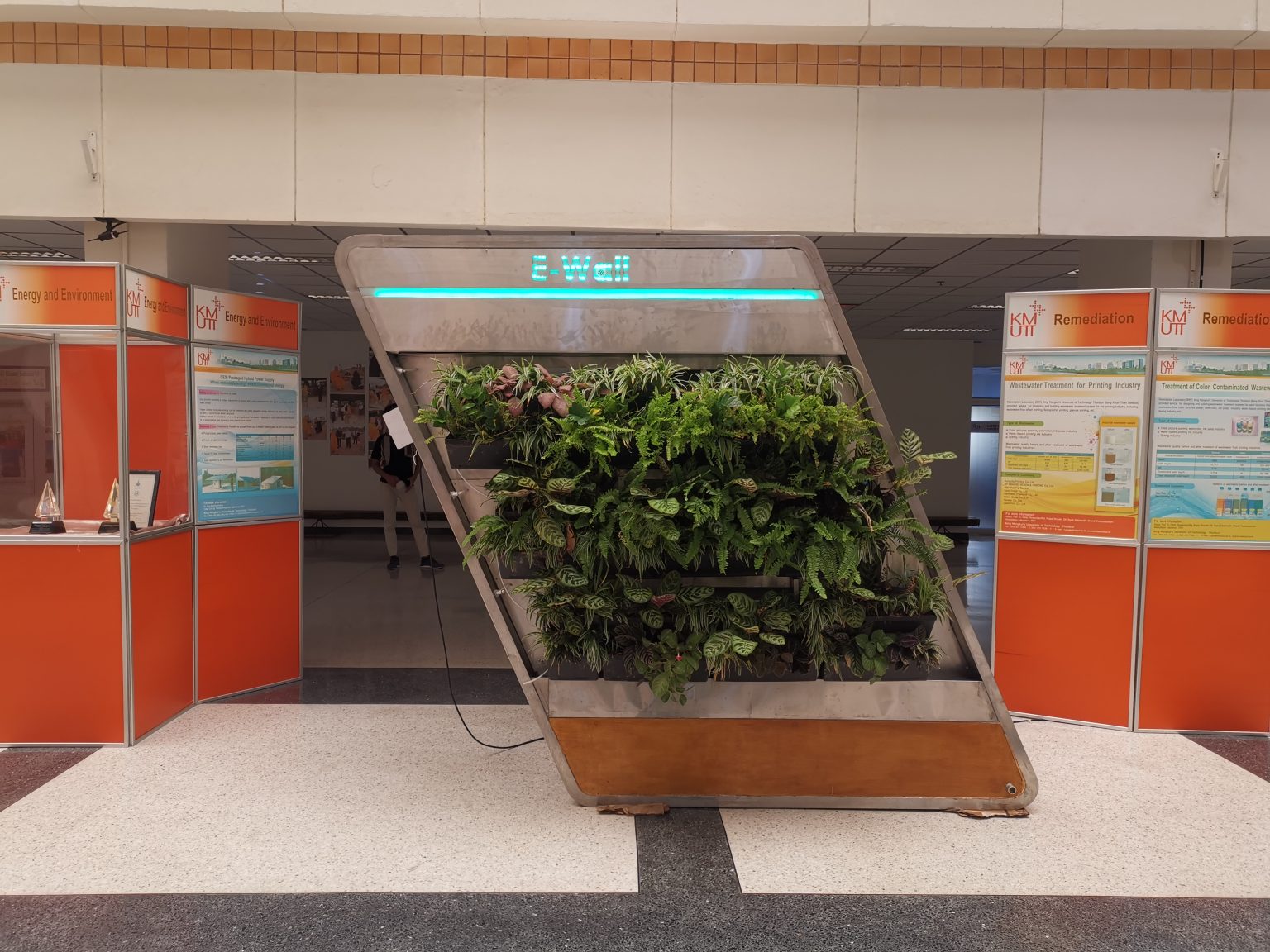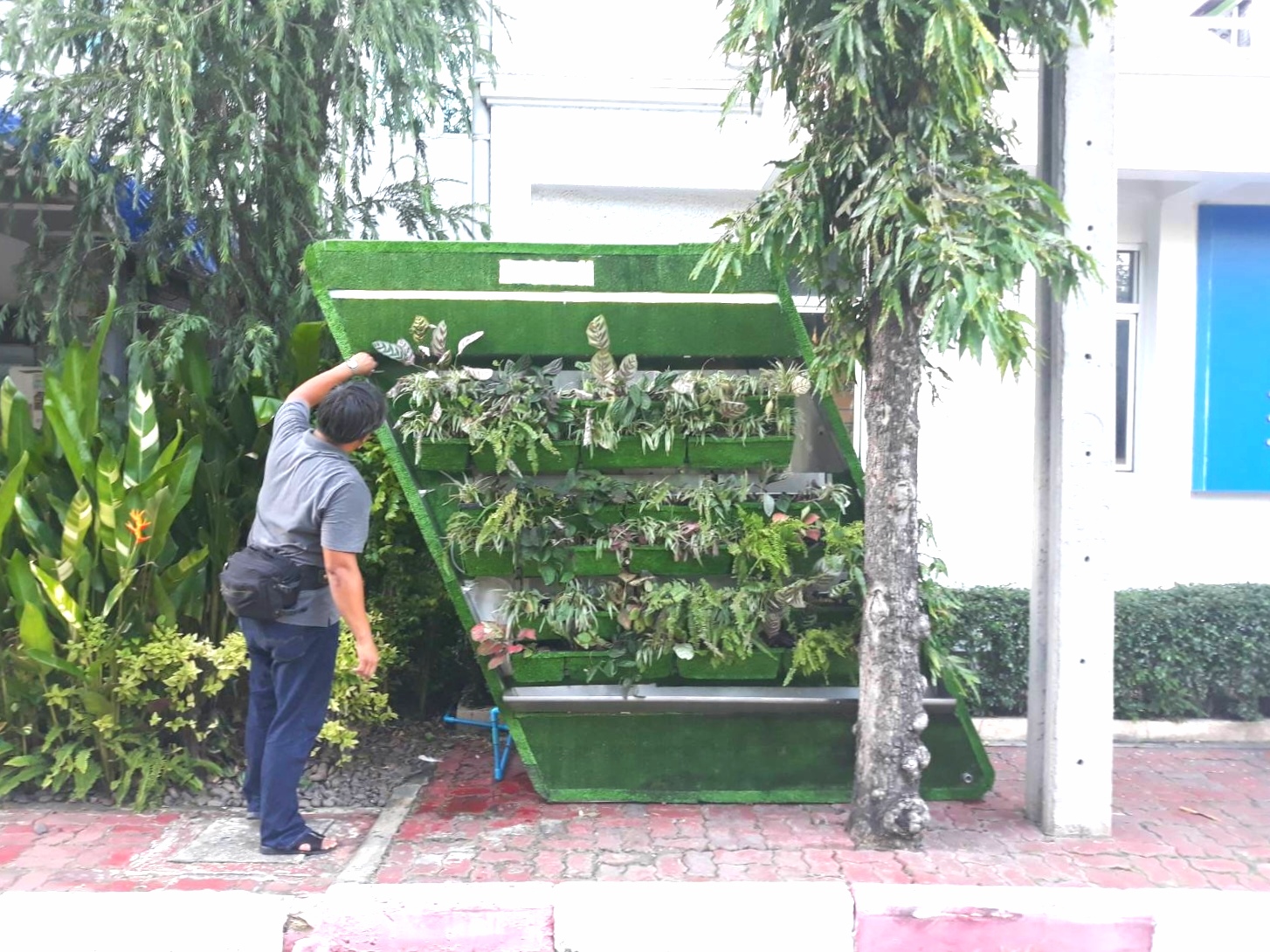Greenery in urban environments provides multiple ecosystem services. Plants not only enhance the beauty of cities and provide a connection to nature but also have the ability to remove air pollution and lower air temperatures. In Thailand, attempts have been made to incorporate green spaces in cities, such as around bus stops and along streets. However, these efforts have faced challenges with watering management and the use of unsuitable plant species.

To overcome these limitations, Assoc. Prof. Dr. Chairat Treesubsuntorn, a researcher at the Pilot Plant Development and Training Institute and an associate professor at the School of Bioresources and Technology, has developed a smart living wall for air pollution treatment. This innovative creation has earned him the prestigious 2021 Young Technologist Award presented by the Foundation for the Promotion of Science and Technology under the Patronage of H.M. the King.
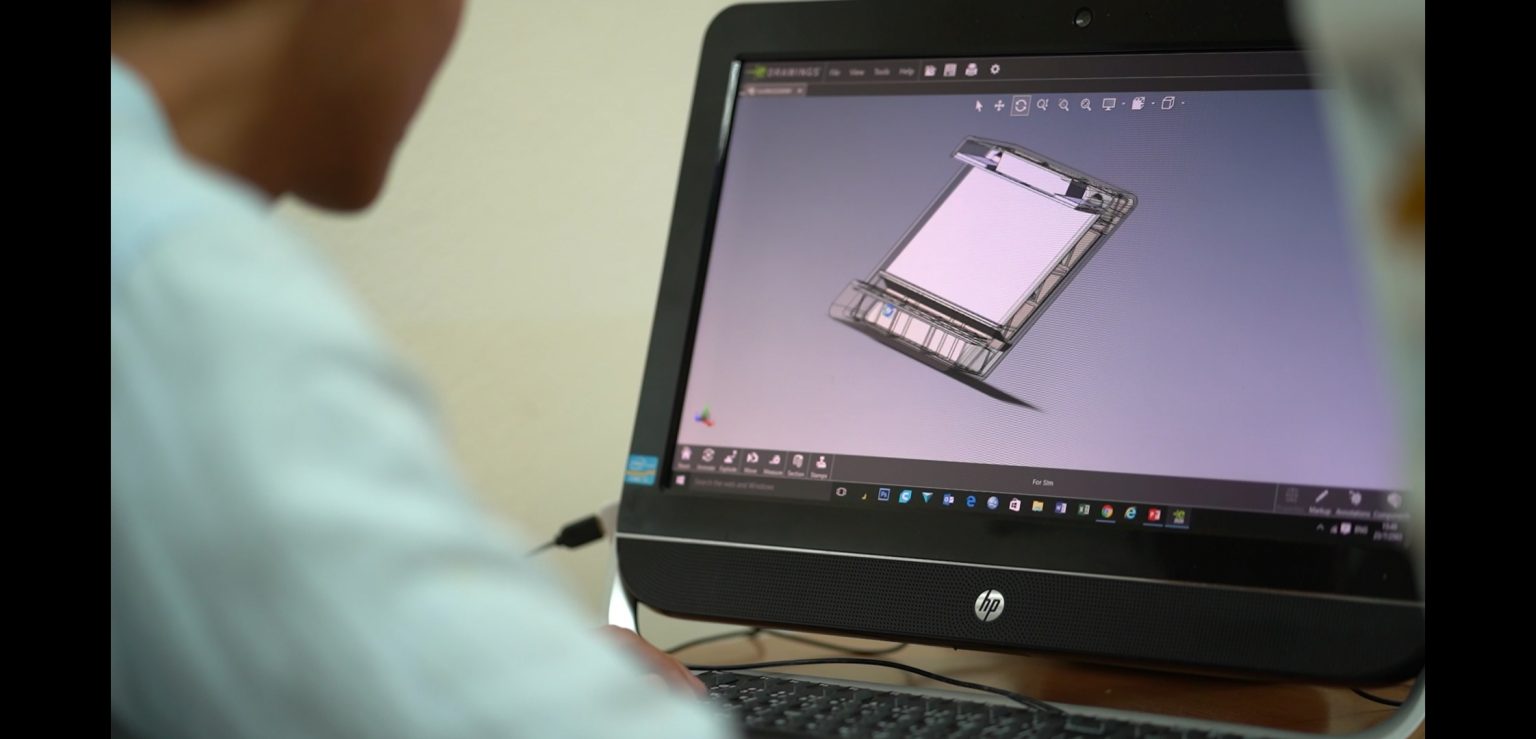
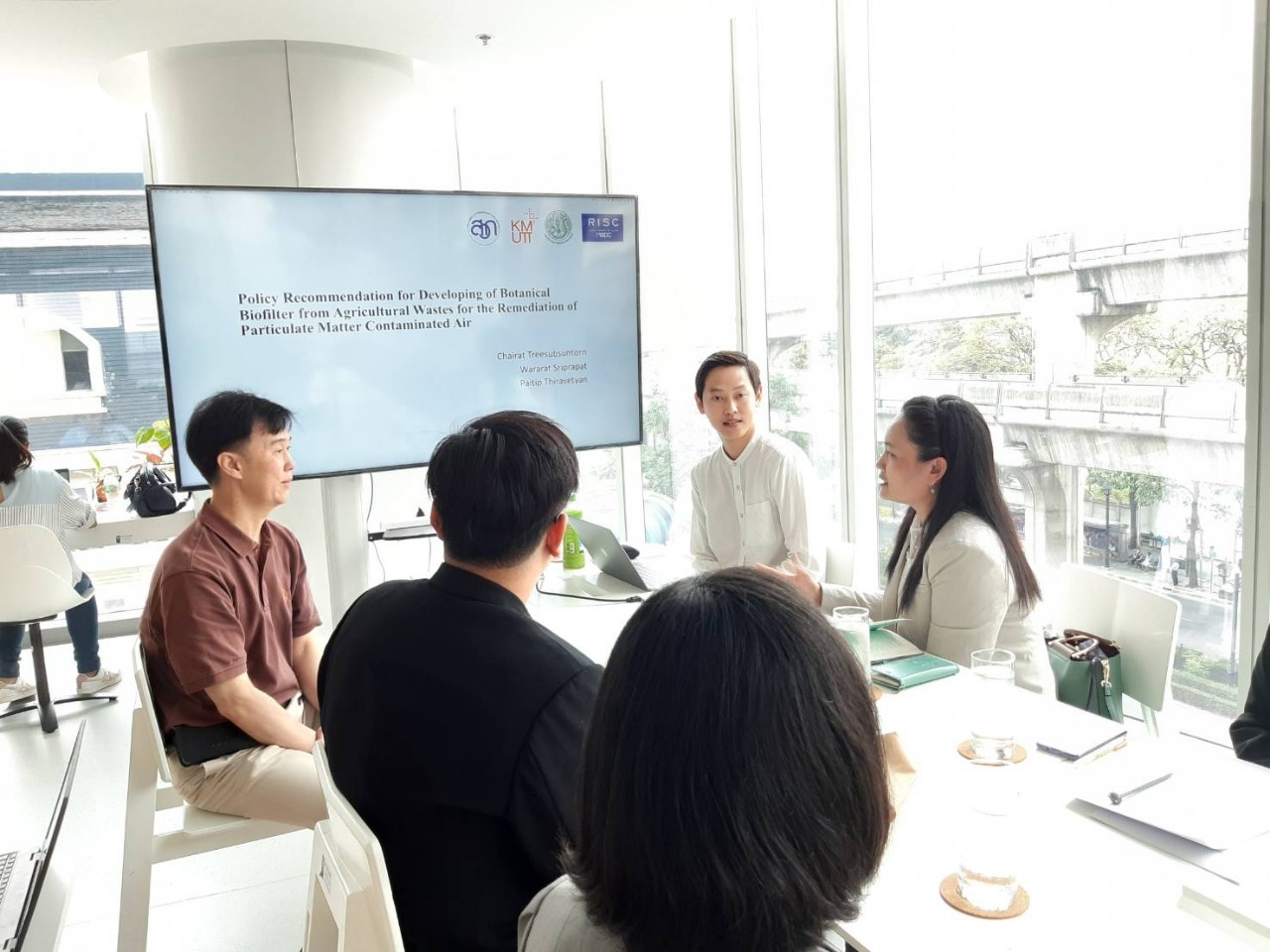
The smart living wall combines phytoremediation technology, which utilizes plants to clean up contaminants, with adsorption technology and an engineering design that optimizes air flow velocity. This combination maximizes the removal of particulate matters (PM) and volatile organic compounds (VOCs) from the air stream. Test results have demonstrated that the living wall achieves an impressive VOCs single pass removal efficiency (SPRE) of 80% and a PM2.5 SPRE of 60%. Additionally, smart farm and sensor technologies are incorporated to automate plant watering, leaf washing, and air flow velocity control. The system can be managed through an online platform, allowing users to set watering schedules, monitor air quality, and adjust air flow velocity based on the surrounding conditions.
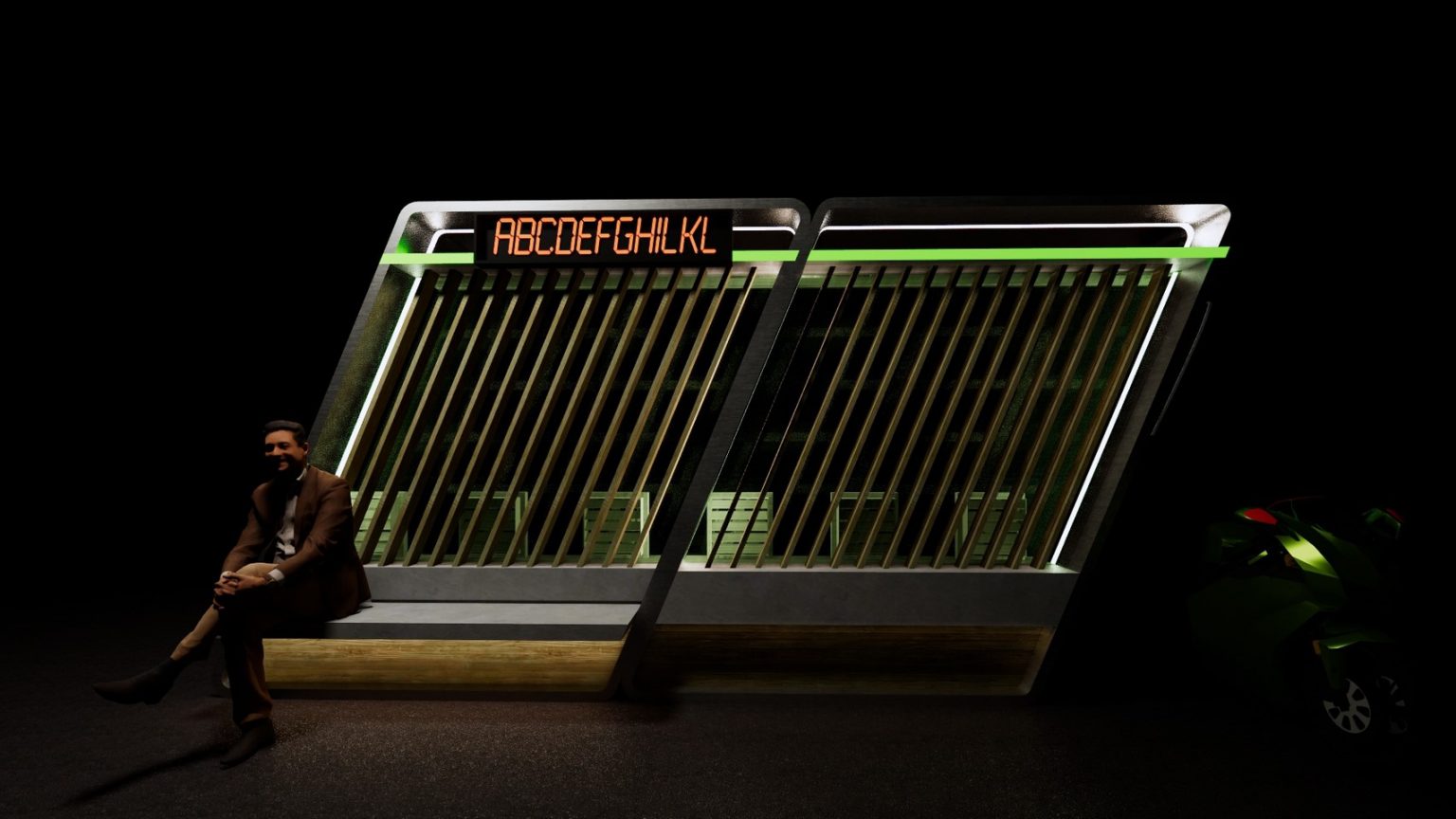
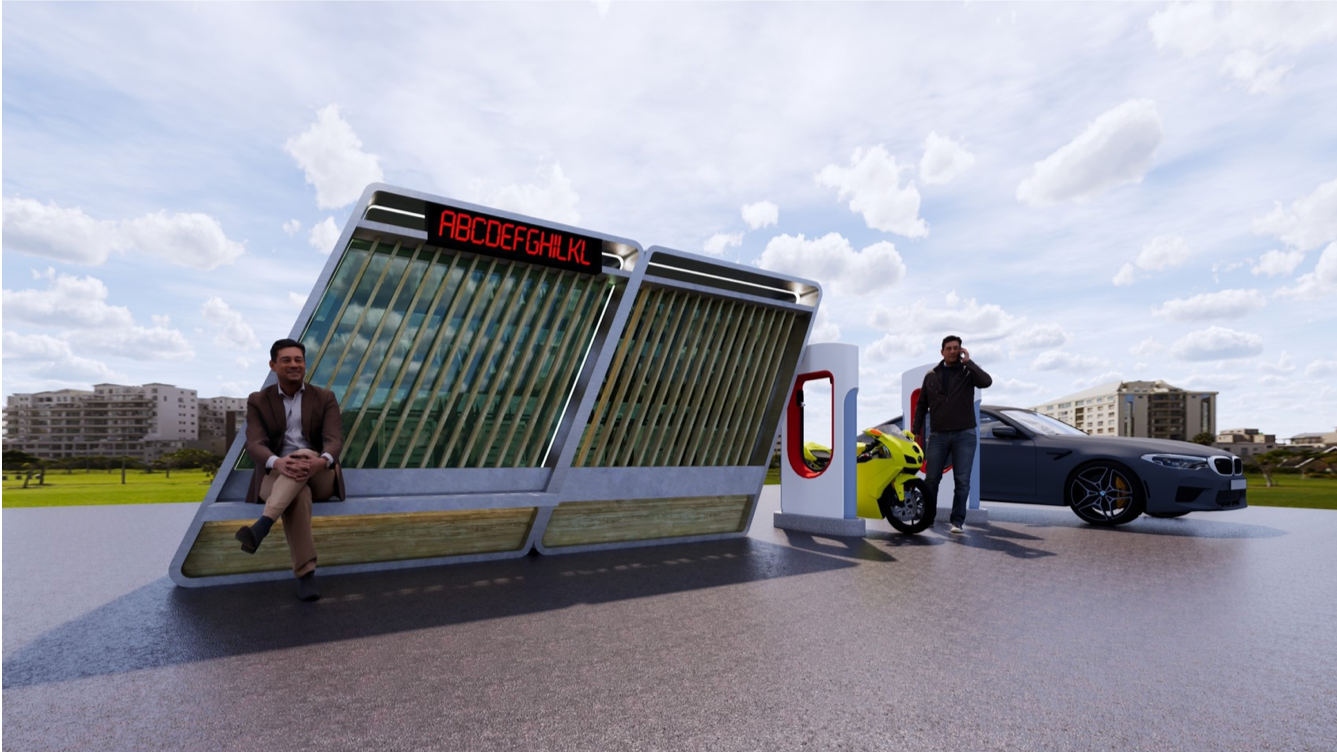
“The living wall is integrated into the design of a green zone, creating a pocket of clean air and enhancing social well-being for city residents. The green zone includes a seating bench and a living wall. Contaminated air is directed into the living wall at an optimal velocity, while clean air is discharged through an air curtain. Air quality measurements and status can be accessed through an online system and displayed on a monitor attached to the green zone. Furthermore, the air flow velocity is automatically adjusted according to the air quality of the surroundings. If the air quality is poor, the air flow velocity increases to enhance the filtration rate. Plant watering schedules can also be set via a mobile device,” explains Dr. Chairat.
Dr. Chairat reveals that a patent application has been filed for the smart living wall for air pollution treatment, and his team is currently working on developing a prototype for commercial production. The introduction of a smaller unit will make the technology more appealing and increase its adoption. He firmly believes that this innovative solution showcases the potential of green technology in improving the quality of life for the Thai people.
Dr. Chairat emphasizes the importance for researchers in the technology-driven era to understand customer demands and continuously expand their horizons. This approach enables them to create marketable technologies and innovations, positioning themselves as leaders in their respective industries.
